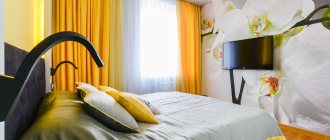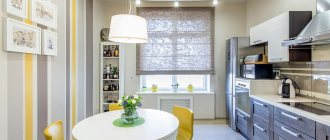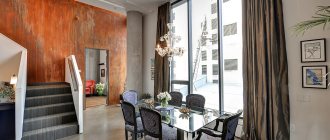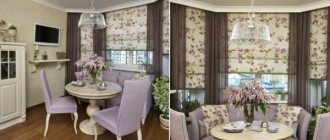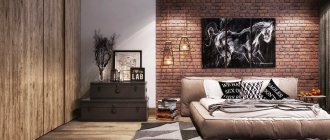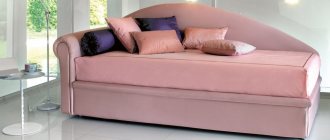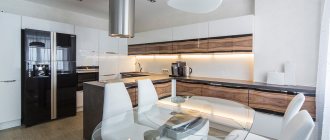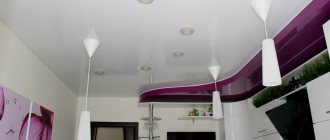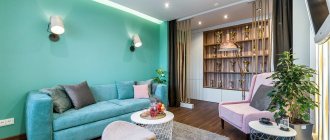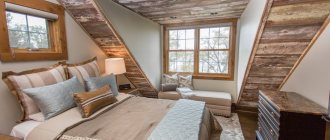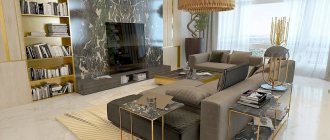Description, operating principle, fuel
What is a biofireplace?
A biofireplace is a modern and safe interpretation of a fireplace without a chimney, which can be used in almost any room, which is undoubtedly an advantage.
How does it work? The biofireplace runs on biofuel, which consists of biological raw materials, and the combustion products are no more harmful than those from a paraffin candle. Externally, a biofireplace can resemble the classic version or be a modern design that will decorate a fashionable interior.
The photo shows a stylish living room combined with a dining area. A double-sided fireplace not only performs a decorative function, but also helps to zone the space of the apartment.
Operating principle
The principle of operation is quite simple. Fuel is poured into the fuel tank and ignited with a lighter. To get fire, these two actions are quite enough. For safety and slow evaporation of fuel, ceramic wool is used.
Fuel for biofireplace
The fuel is technical alcohol. The consistency can be different, for example gel or liquid. To obtain biogel, alcohol, water, thickener and salt are added to the composition. The liquid form of fuel is obtained by processing agricultural crops.
Fuel consumption is quite economical, on average 0.5 liters per hour and a half of operation. But consumption may vary depending on the features of the selected model. The combustion temperature of the flame itself depends on the selected fuel, on average it is 400-600 degrees.
Does the bio-fireplace heat, heat transfer?
Biofireplaces, in addition to aesthetic pleasure, also provide warmth. The heat output of different models differs, starting from 1 kW and can reach 10 kW. In terms of heat production, a biofireplace can be compared to an electric heater. Small fireplaces most often do not have a heating function.
Do you need an outlet?
There is no need for electricity to operate. A natural flame is formed during the combustion of fuel.
Requirements for the room in which the biofireplace is installed
The biofireplace does not have any special requirements for placement, however, basic precautions must still be observed.
- The room in which the bio-fireplace is installed should be well ventilated, but not have strong drafts, just like fans and air conditioners.
- The distance from any interior items should be at least a meter, and from flammable objects such as paper or textiles, at least one and a half meters.
The photo shows a minimalist living room decorated in black and white and a long bio-fireplace.
Traditional, automatic and semi-automatic
The difference between traditional, automatic and semi-automatic biofireplaces is in control technology.
- A traditional, or in other words, mechanical fireplace is lit manually, using matches or a lighter.
- The automatic fireplace is controlled remotely by phone, tablet or remote control.
- The semi-automatic model begins and ends its work after a command given through the control panel located on the fireplace itself.
Open and closed
The difference between open and closed type is in the design of the fuel tank. The open type allows you to see the amount of liquid inside, while the closed type “hides” the firebox inside the structure box.
Wall placement
After their triumphant appearance on the market of decorative home accessories, ecological fireplaces instantly became popular. The designers did not sit idly by, but developed more and more new types of such devices. Currently, floor-standing, table-top, corner, hanging and, of course, built-in options are being actively produced.
Conventionally built-in biofireplaces are divided into two types:
- devices built into the wall;
- devices installed inside furniture.
A bio-fireplace built into the wall can be part of the design of the finished apartment, or such a device can be installed in the required location at the owner’s request if other location options do not suit him.
Modern room design
A built-in bio-fireplace is always original and individual, but the elements it consists of are standard:
- The basis of the device is a frame that unites all elements of the system. The frame is very strong, made of fire-resistant materials, usually high-quality metal alloys or vermiculite. The dimensions of the opening in the wall are measured using the frame so that the bio-fireplace fits into the niche without any problems. Usually the depth of the niche is made at least 15-20 centimeters; this depth allows you to properly mount the bio-fireplace on the wall. To install the device, ordinary anchor bolts are used, which are necessarily included in the device kit. Note that the biofireplace does not require any additional communications or utility networks, which greatly simplifies its installation.
- Inside the eco-fireplace there is a fuel tank, the size of which depends on the specific model of the device. The duration of operation of the biofireplace, as well as the possible flame level, depends on the capacity of the fuel tank. Typically, a biofireplace built into a niche in the wall can burn for several hours. With a flame height of 20-25 centimeters, you can count on the device operating for about 4-6 hours. Additionally, experts have developed different ways to fill the fuel tank with fuel, which makes it possible to further increase the operating time of the system.
- Most devices have flame level adjustment, so you can set individual settings. This adjustment will help you add intensity to the fire, for example, on a winter evening, and on the contrary, on a summer evening, reduce your home fire. At the same time, special sensors will prevent the fire from burning too much and will ensure its safety.
- Biofireplaces built into the wall are installed exclusively in large rooms. For normal operation of the system, a minimum of 20 m3 square meters is required. In such a room, an eco-fireplace will look good and function normally. If you have a smaller room, consider more mobile floor or tabletop options, or order furniture with a built-in bio-fireplace.
- Access to the fire is protected by a protective screen, usually made of fire-resistant glass. Depending on the design of a particular model, the screen can be partially or completely removed, providing access to the burner and fuel block. This way you can take care of the bio-fireplace, fill it with fuel, and add decorative elements and accessories inside.
Not the best placement of a bio-fireplace in the wall
Built-in biofireplaces, like their floor or corner counterparts, have a wide range of types, shapes, and finishes. In classic versions you can often find finishing with stone, brick, ceramics, and iron. Modern biofireplaces are mainly made of metal and glass; they fit perfectly into the minimalist interior of modern styles. The built-in bio-fireplace looks great in any interior, because it is a priori the main star of this room.
Good to know: Well-known foreign and domestic manufacturers of biofireplaces
While studying the latest achievements of designers in fashion magazines, you probably came across an interesting technique of using bio-fireplaces in the form of fiery lines. Such lines of live fire look great in large spaces; they are used to decorate the halls of hotels, restaurants and bars. You can also create such a fire in a regular living room by attaching several burners and fuel blocks to the walls of the room.
Design
How is the fireplace constructed? The design of the case can be almost anything, depending on personal preferences. The main requirement is compliance with safety rules, or rather the required minimum distance from the flame. The top of the flame should be at least 80 cm from the surface of the body, and the distance from the side should be at least 20-25 cm.
Types and diagrams of burners
As for the description of the burners, they can be of several types and have different characteristics, but they all operate on the general principle, evaporative atmospheric. That is, the fuel evaporates in a heated chamber in the absence of air, and the vapors released into the atmosphere burn in the air.
For this operating principle, there are three types of burners:
- capillary,
- wick,
- gravity flow.
The capillary burner has a simple design, but there are a number of disadvantages. When starting up, you may smell ethanol; the filler in the burner tank becomes clogged over time and requires replacement, and it is also necessary to provide a barrier and adjust the flame height, since at the beginning of operation the fire burns hotter.
The wick burner is easier to use. Filling the container with fuel is done “by eye”. The flame of this type of burner is stable, without sudden changes, so a barrier is not required, except for various flame effects, but it is worth providing for the presence of a divider grille.
A gravity burner produces a stable flame during operation and does not emit vapors when warming up, since a supply of them is formed in the evaporator and this is enough to start. In addition, this type of burner can be produced in a round shape, provides long operation, up to 4 hours, and is also suitable for a fireplace of any power.
Advantages and disadvantages
A biofireplace, like any other device, has its advantages and disadvantages. It is worth noting the most significant of them.
Pros:
- The biofireplace is easy to install and operate;
- In addition to its decorative function in the interior, a biofireplace is an additional source of heat;
- Economical fuel consumption and low cost;
- Wide selection of models;
- Combustion products are not harmful to health.
Minuses:
- High cost, especially on models with automatic control;
- Open fire requires careful handling.
The photo shows a spacious living room in high-tech style. A freestanding floor-standing fireplace replaces the coffee table, and the flames can be seen from anywhere in the room.
Product types
If you plan to purchase a structure, you need to select in advance a suitable location for installation, as well as the optimal model. The bio-fireplace in the living room interior is the central object that immediately attracts attention. Thanks to the live flame, a cozy atmosphere is provided, and sofas and armchairs are usually placed nearby. Due to the small size of the burner, manufacturers can easily create products with a variety of configurations and dimensions.
Attention! It is possible to install a biofireplace on the floor or in a corner, as well as fix it to a wall or even place it on a table.
Wall-mounted biofireplaces
It is fixed on any part of the wall. The models have small dimensions, so the length does not exceed 100 cm, and the depth varies from 15 to 20 cm. Products can be flat or slightly convex. It is not recommended to place the equipment near the TV as it will attract a lot of attention. Types of wall products include:
- Mounted. This model has a flat shape and is also fixed to the wall like a regular large picture. If necessary, the product can be easily removed and attached to another part of the surface.
- Built-in. The equipment is placed in a special niche in the wall. This model has a flat glass screen. To dismantle or move the bio-fireplace, you will have to dismantle part of the wall.
- Angular. Installation is considered quite complex and specific, since you need to make an even outer corner on the wall where the equipment is built in. The model is equipped with two or three transparent sides, which allows you to admire the attractive flame from any part of the room.
In order for the equipment to look great in the room, you need to take into account the features of its body. This determines how beautifully the hearth will be reproduced. Some models imitate a forged outdoor fireplace, while others are made of glass and metal, so they fit perfectly into a high-tech room.
Tabletop
They are only suitable for a small room where there is no possibility to allocate enough space on the wall or floor to install a full-fledged bio-fireplace. These models are small in size, so they can be installed on a regular desktop or coffee table. They can even be placed on an open shelf.
The features of such products include original design. Therefore, when choosing them, the style and color palette of the room are taken into account. Fireplaces are equipped with various decorative elements, therefore they are represented by expensive accessories.
Floor-standing
They are installed directly on the floor, so they take up a lot of usable space. Such models are chosen for large rooms, and are usually placed in the living room, where people spend a lot of time. There are several subtypes of floor biofireplaces:
- Wall-mounted. It imitates a classic hearth in appearance, but can be made in various styles. It is usually large in size, so it is placed next to a free wall of the hall.
- Island. There are transparent walls on all sides, which allows you to enjoy an attractive view of the fire from anywhere in the room. The equipment is placed in the center of the room, and also often acts as a way of zoning the space. These models have different sizes and are also available in different shapes and colors.
Island models are extremely rare, so people usually prefer to use wall-mounted equipment. Below you can study beautiful photos of a biofireplace in the living room interior .
Kinds
Tabletop (portable)
Mobile design that can be easily moved to another room. This model produces a minimum of heat and has more of a decorative function in the interior of the room. Mini biofireplaces operate on replaceable cartridges.
Built into a niche in the wall
An interesting model can be built into one or two vertical planes, that is, a corner biofireplace. Visually, the structure looks like part of a wall.
The photo shows the interior of a cozy living room in white and gray. A rectangular bio-fireplace built into the wall fills the room with warmth.
Built into furniture
A fireplace built into the furniture takes up little space, but creates a feeling of coziness in the interior. A mini bio-fireplace can be built into a coffee table. As a rule, it is installed on a flat horizontal surface. The table is easy to move and will give uniqueness to the interior. Another design option is a fireplace built into the countertop or central part of the cabinet.
The photo shows the interior of a bright living room in a modern style. The bio-fireplace is built into the chest of drawers, the back wall of which is decorated with mirror inserts.
Wall
The narrow design does not take up much space and, depending on the design, will decorate the interior in a modern style. The wall-mounted model is fixed to the wall with 2 screws.
Floor
A biofireplace of this type can be considered not part of the interior design, but its main object. Unlike wall-mounted and built-in models, a floor-mounted biofireplace provides a full view of the hearth from any side. Floor-standing models are heavier, but just as portable.
Suspension
The bio-fireplace is attached to the ceiling. This model will look good in rooms with high ceilings and will decorate a modern interior.
In the portal
The bio-fireplace in the portal imitates a fireplace in the classical sense. The portal itself can be made of various materials and is of the wall type. The depth and width of the portal depends on the size of the fuel cassette.
The photo shows an interior in a classic style. The bio-fireplace is “recessed” into the portal, and the body is made of stone and plaster.
Angular
The corner model can be installed in the corner of the room, thereby using empty space. Another type of corner fireplace is installed on the walls, so it can decorate two rooms at once.
Round
A round or spherical biofireplace is suitable for modern interior design. A round fireplace will look good as a hanging, floor or tabletop model.
Types of biofireplaces
Despite the fact that the equipment for all fireplaces is approximately the same, the models are completely different in appearance. For any interior and style, you can choose a bio-fireplace that is suitable in shape and size. You can choose the most successful option with the help of a designer by ordering a 3D tour of the apartment.
A fireplace that looks almost like a real one is called a portal firebox. Such a floor-mounted bio-fireplace will fit into any classic design. Many people try to give the fireplace a more naturalistic look and style it with special heat-resistant ceramic logs, and also make imitation of real coals.
Photo: planikafires.com
There are two types of wall-mounted biofireplace in the interior: wall-mounted and built-in. Models that hang on the wall look neat and look like a flat-screen TV. Models that are built into the wall are stationary; they are usually placed in plasterboard niches.
Photo: ecosmartfire.com
The built-in bio-fireplace can perform a zoning function. For example, a through fireplace located in the wall creates the effect of a border between zones without a solid wall. This technique is often used in restaurants and other premises where it is necessary to visually delimit space.
Photo: bobedre.dk
The tabletop version is a small bio-fireplace made of steel or ceramic. It can be compared to candles, as it can also create an intimate atmosphere. You can find two different types in stores: in the shape of a cylinder or a cube. Such fireplaces are completely safe, since in case of a tipover, manufacturers build in a special mechanism that blocks the supply of biofuel.
Photo: trendhunter.com
A corner biofireplace is a solution for small apartments, as it can be placed in an unused space of the room. Experts note that such a model can even visually expand the room - the fire makes it brighter.
Photo: carlaaston.com
The fireplace basket is a mobile bio-fireplace that can be moved to any room. Can serve as a small heater.
Photo: archiexpo.com
A recently popular option is “fire line” fireplaces. They are long and made of several fuel modules. They look impressive in high-tech interiors - in niches or on podiums.
Photo: albertolamaphotography.com
Materials, body design
Glass
The stylish design with glass will look harmonious in a modern interior. In addition, the glass gives a complete view of the flame. The body uses reliable heat-resistant glass.
Ceramic body
This type is most often used in the manufacture of small structures, such as a tabletop biofireplace. Ceramic matches the flame beautifully. The design of the body can also be made of ceramic tiles.
With a plasterboard portal
Plasterboard construction is a fairly economical design method. You can make the design yourself or purchase a ready-made one. The size, shape and finish can be almost any.
Marble body
A bio-fireplace in a marble casing is a luxurious and expensive piece of furniture. Natural marble or high-quality imitation will look perfect in any interior.
Wooden body
Wood is a beautiful and noble material. The design can be in classic, country or Provence style. The wood must be treated with a heat-resistant coating.
Accessories and decor
Accessories and decorative elements will add ambiance and create the right atmosphere in the interior. It is worth remembering that the decor should not block the flame, but should be located around the fuel block.
Ceramic firewood, burnt logs
An integral part of the fireplace can be considered red-hot wood or stones; they enchant with their warmth and mesmerizing color. For a bio-fireplace you will have to exclude natural wood. It will be replaced by ceramic products, which are practically indistinguishable in color and texture from real wood. Ceramic firewood can imitate any species, most often pine or birch.
Imitation coals
Biofireplace coals are made of ceramics or glass ceramics. Visually, they are no different from the real ones and exactly repeat the shape and color.
Stones, pebbles
Natural pebbles or stone are used. The material is strong and heat resistant. For a more attractive appearance, the stones are polished and coated with the desired color. The fire is reflected especially beautifully on the varnished surface of the stone.
Photo in the interior of the apartment
Living room
A fireplace in the interior of the living room will envelop the room in special comfort and fill an ordinary evening with charm. Different variations of location and design allow you to choose the ideal option for your living room interior. For example, a floor-standing fireplace in a glass case for a modern style or in a portal with a marble frame for a classic one.
A big advantage of a bio-fireplace is the ability to use the space above the fireplace, for example, installing a TV above it. This design method is safe and looks impressive.
The photo shows a modern living room interior with a bio-fireplace built into the countertop.
Bedroom
A fire in the bedroom interior will help you relax and give you a romantic mood. For a spacious bedroom, you can use a built-in or floor-standing fireplace. For a compact room, desktop or built-in furniture models are suitable.
Kitchen
The fireplace in the kitchen interior is an unusual and original solution. It can be built into a wall, the end of an island, or serve as a room divider. Another design option would be a small tabletop fireplace that will decorate the dining area.
Loggia, balcony
A loggia or balcony will become a real lounge area, even with a small bio-fireplace. The interior will be complemented by a table and a pair of cozy chairs. On such a loggia it is pleasant to end the day under the warm glow of the fire.
Photos of a biofireplace in the living room interior
How to harmoniously fit bio-fireplaces into the interior of the living room can be seen in the photo below:
Photo in a country house
A country house or cottage is an ideal place for a fireplace. The large area allows you to choose unusual and voluminous models, while eliminating unnecessary hassle during melting and maintenance.
The photo shows a cozy lounge area of a country house. The bio-fireplace is imitated as a wood fireplace.
Another original solution would be to install a fireplace outside, a couple of chairs opposite it and a cozy blanket will make an evening in the fresh air truly magical.
Presentation in different styles
Classical
The interior will be decorated with a bio-fireplace in a portal framed with a marble or plasterboard frame. Symmetrical shapes and straight lines will support the design concept.
Modern
There are many design ideas for a modern interior. A biofireplace will be an excellent solution for such trends as minimalism or hi-tech. A transparent glass, chrome or ceramic body will highlight the style features in the interior.
The photo shows a living room in a modern style, made in a warm palette. A small fireplace built into the wall decorates the interior.
Loft
The urban direction will be decorated with a bio-fireplace built into the wall or hanging. Fire will pair well with cold, raw concrete walls or brickwork.
The photo shows an interior in loft style. A small fireplace is located under the TV and takes up minimal space.
Provence
Gentle and romantic Provence will envelop the room in warmth with a bio-fireplace in a wooden, stone or plasterboard casing. The interior will be complemented by ceramic birch firewood and coals.
Biofireplaces in interior design
To decide to buy this rather expensive item, you need to mentally “see” its placement in the interior and decide which bio-fireplace will be most suitable.
Almost like a real fireplace
This option is framed by a panel that imitates a real wood-burning fireplace. Fireproof materials cover an open flame well, and therefore it is safe. The fireplace is the centerpiece of the wall composition, and its style is perfectly supported by the leather upholstered chairs and the color of the flooring. You can safely place flowerpots with flowers on the mantelpiece of this structure, since such a fireplace will not harm them in any way and will not dry out the moisture in the soil.
Bio-fireplace in a brick wall - for lovers of the loft style
This interior design option is designed for a more modern taste and resembles a loft style. In this case, the bio-fireplace plays the role of a situation stabilizer, since its lines and the contours of the podium underneath are distinguished by their evenness and severity. at the same time, the flame echoes the color of the brickwork. The room is large enough for the size of the fireplace. In general, the interior looks thoughtful and harmonious.
Great contrast with the bright wall color
This modern fireplace design, made of silver-colored metal alloys, blends surprisingly seamlessly with the soft crimson wall. Shades help to relax your vision after a busy day at work. The fire screen is made of a material that shades the flames, which creates the spatial effect of deepening the fireplace space into the wall. The surrounding white color emphasizes and highlights the location of the fireplace. A simple and pleasant design option.
An interesting solution in oriental style
A design solution focused on oriental themes is not suitable for everyone, but there are also fans of this trend. A bio-fireplace with a metallic tint echoes the metal of the statue and the wooden attributes of the interior. The almost mirror-like background of the fireplace screen reflects the fire well, so it appears visually larger, and the reflection of the interior in it expands the space of the entire room. The general design style is well emphasized by other elements of the room - each item carries a certain mood corresponding to the style.
Partition wall with built-in bio-fireplace
This photo shows a living room, which is decorated in a minimalist style, and a small bio-fireplace built into the wall harmonizes perfectly with the overall style and does not stand out. Look how harmoniously everything is done, the inclusions of decorative elements are minimal, but it is difficult to imagine this interior without any separate element! A wall arranged in the form of a partition does not make the room smaller, but on the contrary, it increases its space, both in width and height, thanks to its whiteness and a niche where a bio-fireplace is built in, which works for two zones of the room at once. You can retire behind the wall in a comfortable chair with a cup of coffee and an interesting book, or you can, being in the main space of the room, have a party and surprise your guests with such an interesting home design.
Good advice is to also watch the presented video, which will more clearly show how the play of flames of a bio-fireplace literally transforms a room.
